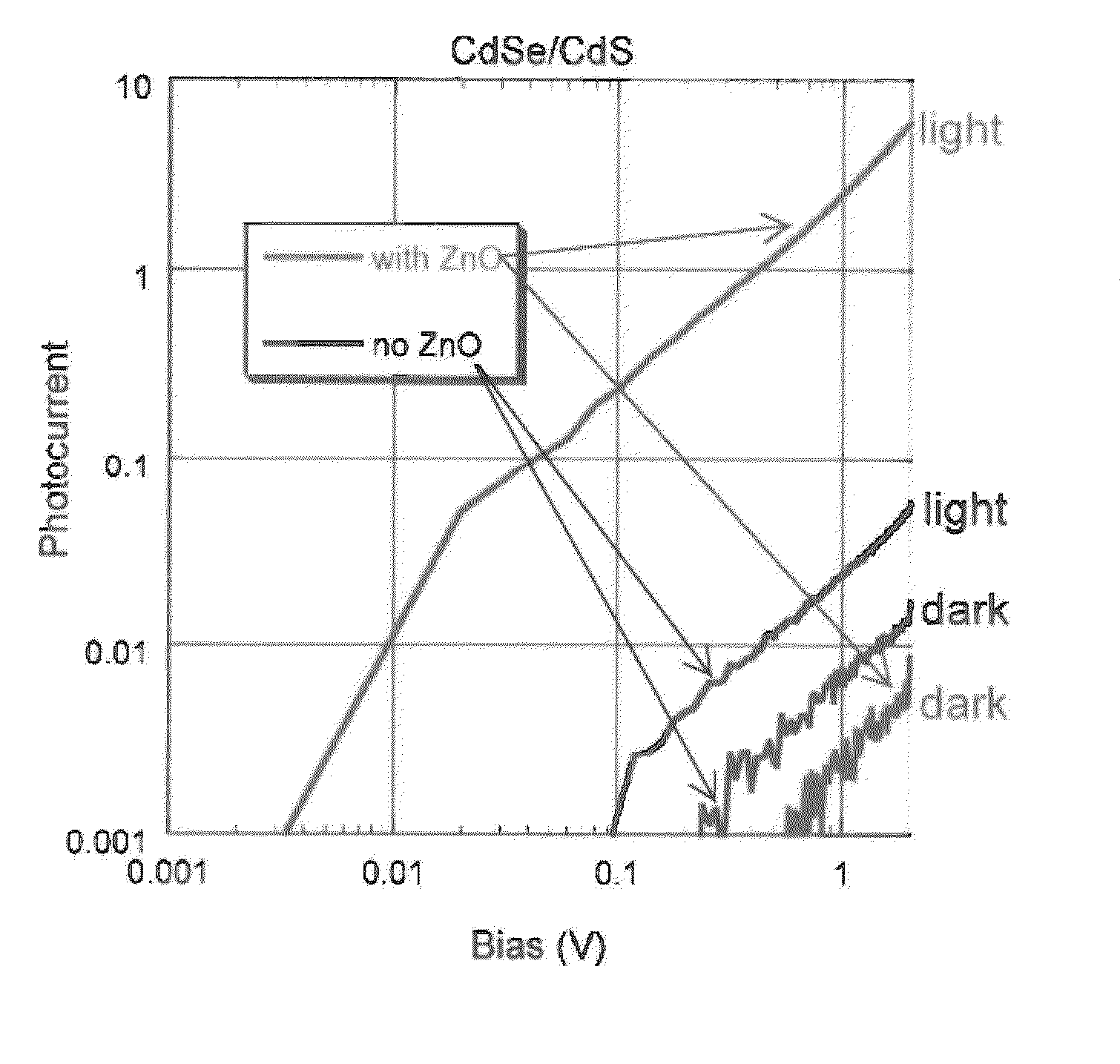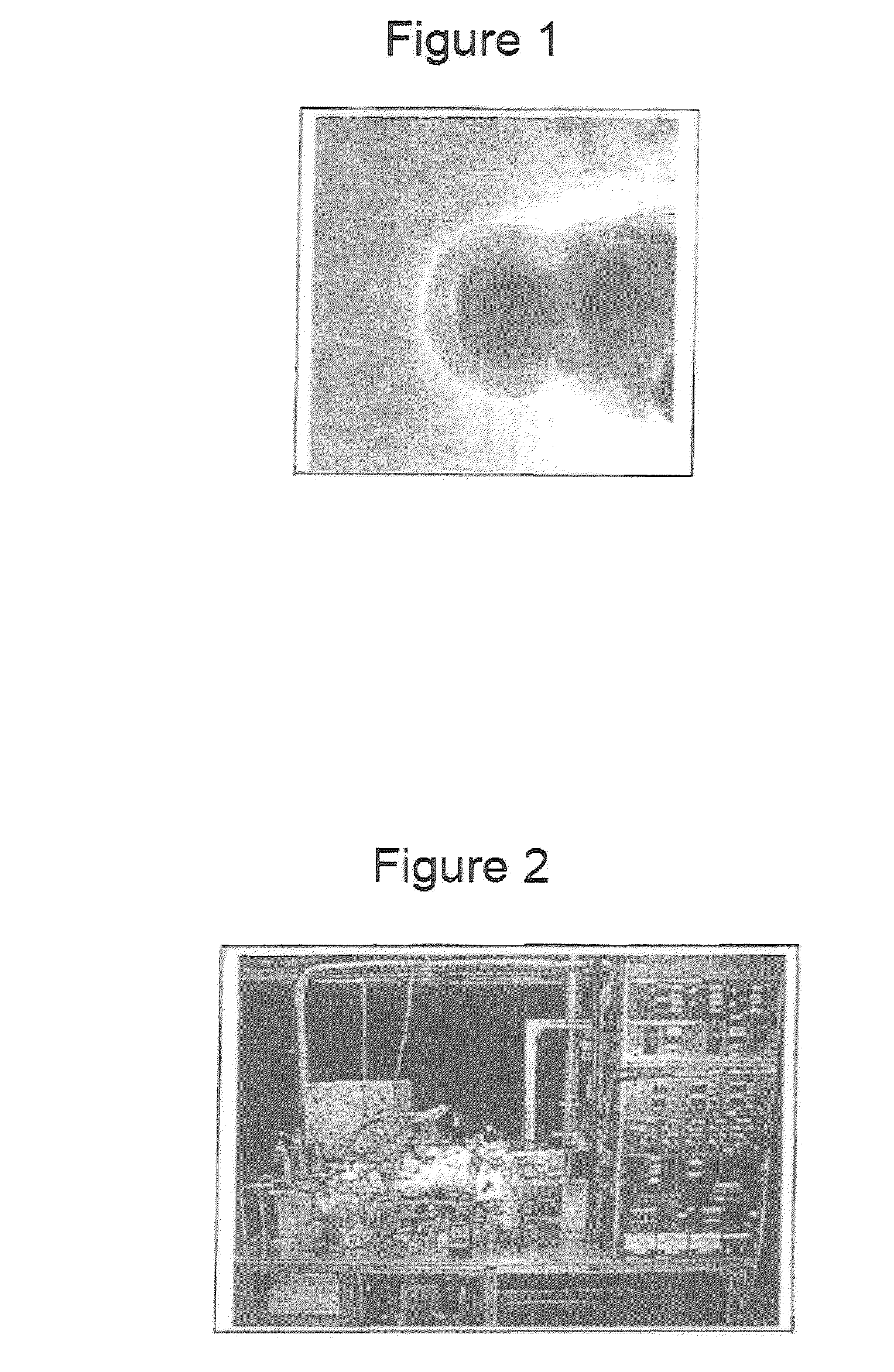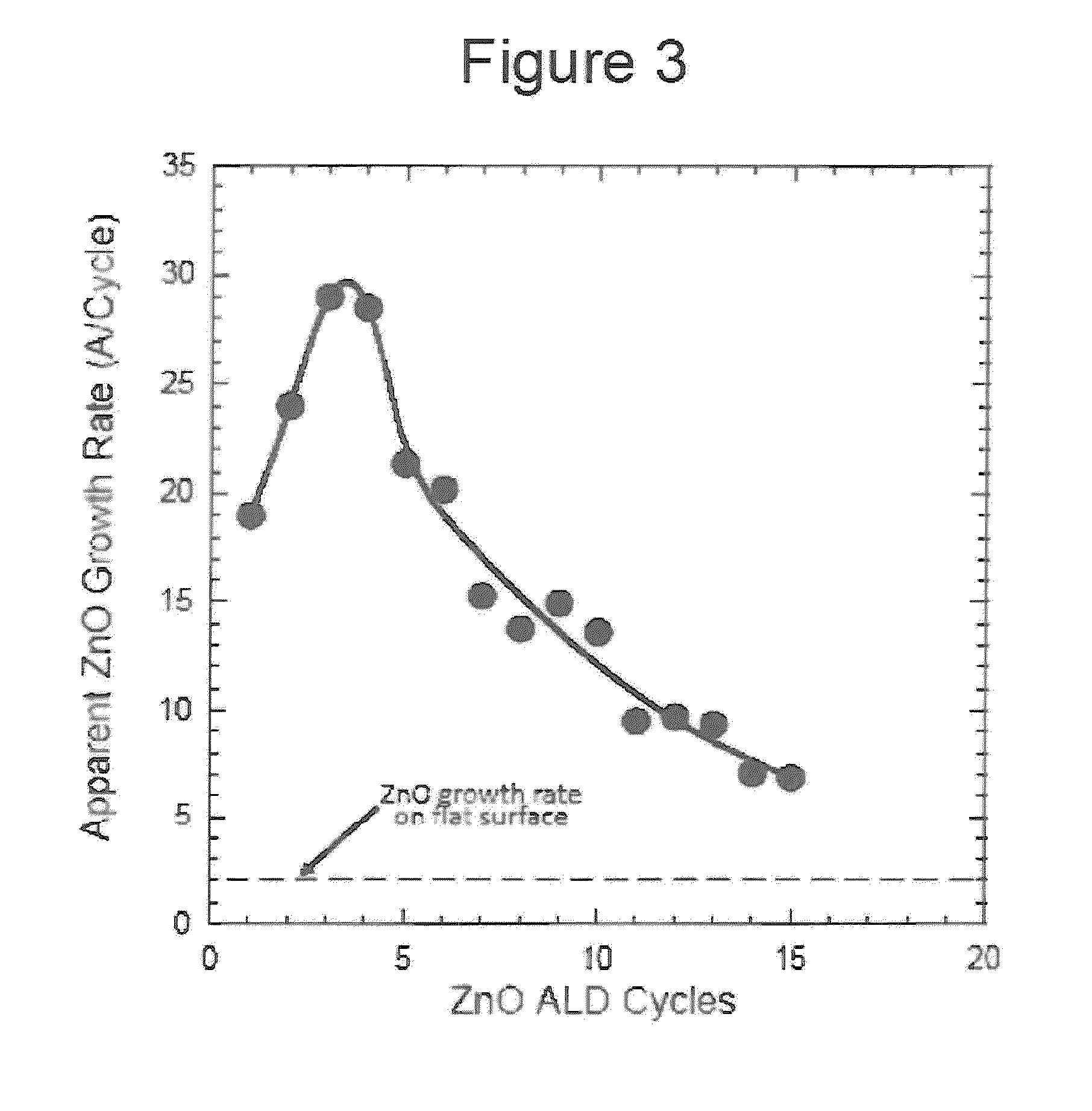Atomic layer deposition for functionalizing colloidal and semiconductor particles
a technology of atomic layer and colloidal particles, which is applied in the direction of semiconductor devices, electrical apparatus, nanotechnology, etc., can solve the problems of achieve the effect of efficient functionalizing useful electronic components, improving electronic coupling, and high resistivity limits device application
- Summary
- Abstract
- Description
- Claims
- Application Information
AI Technical Summary
Benefits of technology
Problems solved by technology
Method used
Image
Examples
example 1
[0041]The colloidal dots and core / shells are synthesized following slight modifications of a conventional procedure (see FIG. 8). As synthesized, the dot solutions have a large excess of non-volatile hydrocarbons. These hydrocarbons are first cleaned off by an initial precipitation and centrifugation with ethanol. The dots are then further cleaned by re-dissolving the precipitate in CCl4, with 0.2 vol % tri-n-octylphosphine (TOP) and tri-n-octylphosphine oxide (TOPO) dissolved, followed by centrifugation, transfer of the clear quantum dot solution to a clean test-tube and precipitation with ethanol by centrifugation. This is repeated twice. Finally, the precipitate is dried and redissolved in a mixture of hexane and octane (9:1). This solution is then centrifuged and filtered. Drop-casting leads to clear dry films between 50 and 80 nm thick and an optical density of 0.01 to 0.05 at the exciton peak (the smaller value is for core / shells).
[0042]Such films are highly insulating and exh...
example 2
[0043]In a preferred method of Example 1, a solution of tri-n-octylphosphine oxide (TOPO) at 300° C. is prepared. A solution of Cd and Se precursors (e.g. (CH3)3Cd+(CH3)3Se in tri-n-octylphosphine (TOP) is prepared, and this solution is injected into the last TOPO solution. First nucleation of CdSe is obtained by thermal decomposition. The system is rapidly cooled to about 260° C. and the slow growth of CdSe quantum dots ensues. The size of the quantum dot is determined by the duration of the growth step. Specific examples are described hereinafter.
example 3
[0044]Measurements were carried out to determine photoluminescence (PL) under 354 nm UV lamp irradiation following ALD of Al2O3 on various CdSe / CdS and CdSe quantum dots prepared in the manner described in Examples 1 and 2. As noted in FIGS. 9A-9D, various ALD temperatures were used and selected samples were subject to an NH4OH dip. Of note, is the effect of these parameters on the photoluminescence of the various specimens, and in particular, that higher ALD growth temperatures quench the photoluminescence.
PUM
| Property | Measurement | Unit |
|---|---|---|
| energy barriers | aaaaa | aaaaa |
| coupling energy | aaaaa | aaaaa |
| thickness | aaaaa | aaaaa |
Abstract
Description
Claims
Application Information
 Login to View More
Login to View More - R&D
- Intellectual Property
- Life Sciences
- Materials
- Tech Scout
- Unparalleled Data Quality
- Higher Quality Content
- 60% Fewer Hallucinations
Browse by: Latest US Patents, China's latest patents, Technical Efficacy Thesaurus, Application Domain, Technology Topic, Popular Technical Reports.
© 2025 PatSnap. All rights reserved.Legal|Privacy policy|Modern Slavery Act Transparency Statement|Sitemap|About US| Contact US: help@patsnap.com



